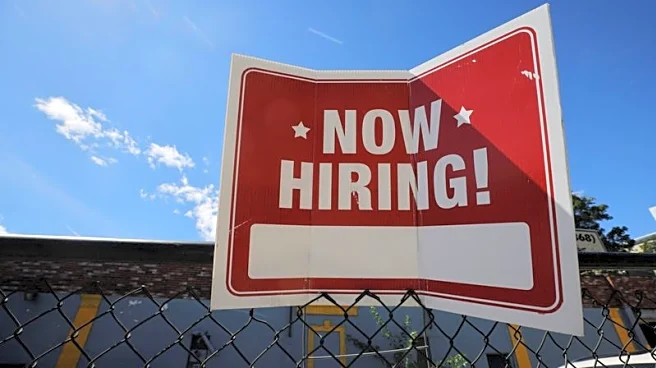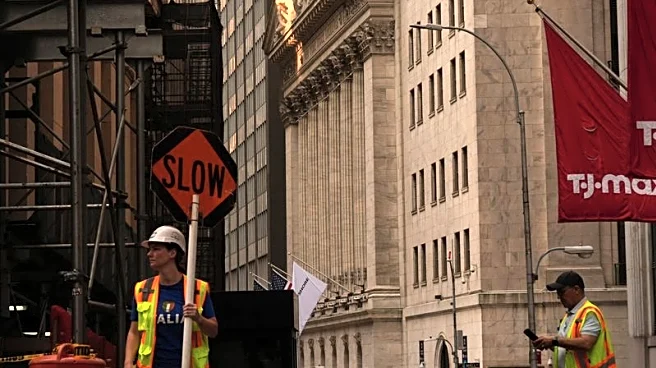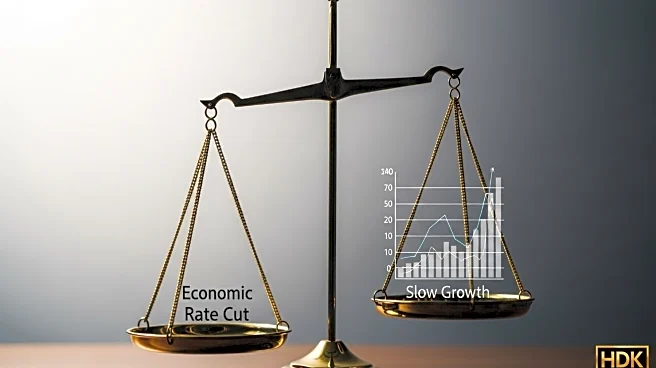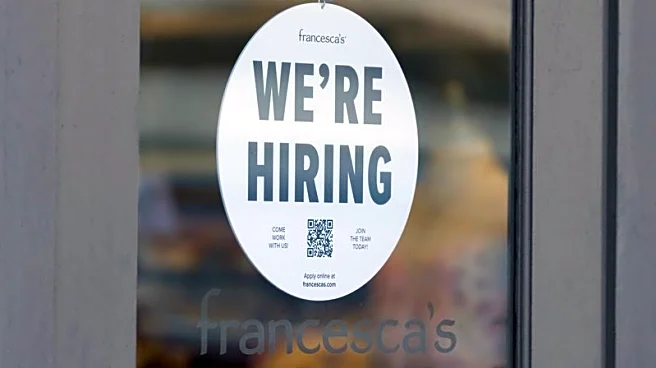What's Happening?
The latest jobs report indicates a significant cooling in job growth, with nonfarm payrolls increasing by only 22,000 in August and the unemployment rate rising to 4.3%. This marks the highest unemployment rate since 2021. The report also revealed that employment shrank in June for the first time since 2020, prompting concerns about the labor market's durability. Several sectors, including information, financial activities, and manufacturing, posted declines in August, with healthcare being the only sector showing growth. The weak job growth has led traders to anticipate a potential interest rate cut by the Federal Reserve at its upcoming meeting, as signaled by Chair Jerome Powell.
Why It's Important?
The potential interest rate cut by the Federal Reserve could have significant implications for the U.S. economy. Lower interest rates typically aim to stimulate economic activity by making borrowing cheaper, which can encourage spending and investment. However, the weak job growth and rising unemployment rate suggest underlying issues in the labor market that may not be easily addressed by monetary policy alone. The sectors experiencing declines could face further challenges, impacting overall economic stability. Additionally, the appointment of EJ Antoni as the new BLS commissioner, pending Senate confirmation, may influence future labor market data reporting.
What's Next?
The Federal Reserve's decision on interest rates will be closely watched, as it could set the tone for economic policy in the coming months. Stakeholders, including businesses and policymakers, will need to assess the impact of any rate changes on their operations and strategies. The upcoming preliminary estimate of annual revisions to payroll data may provide further insights into the labor market's condition, potentially influencing future policy decisions. The Senate's confirmation of EJ Antoni as BLS commissioner could also affect the agency's approach to labor market data collection and reporting.












